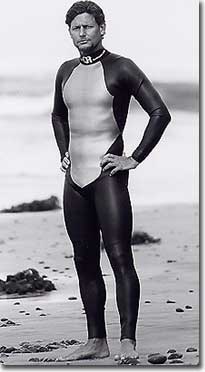Wetsuit Rubber: A User’s Guide
With several wetsuit reviews coming out of the pipe, I thought it worthwhile to review a little bit the rubber that these suits are made of. Two of the new suits I'm writing about are made of a new rubber, #40, that is finding a mixed level of usage in the triathlon world. Dan initially talked about #40 rubber as part of a larger article on rubber in general that I'd recommend reading. You can find it HERE.
To fully understand a wetsuit, we need to back track a little to the factory where most good wetsuits are really born. That is Yamamoto's neoprene rubber factory in Japan. Most wetsuits you've ever heard of are made of Yamamoto's rubber. In true Japanese fashion, they employ a simple numbering scheme. Each time they come out with a new neoprene, it gets the next number on the list. Number 38 rubber, once a premier rubber, is now relegated to lower end wetsuits. Number 39 rubber has been the staple of high end suits for quite some time now. But there is a new rubber out there – #40. Number 40 is more flexible and more buoyant than 39, which is in turn more flexible and buoyant than 38. However, unlike the difference between #38 and #39 rubber, where #39 was clearly superior in pretty much all aspects except for bulletproof durability, I'm not yet sure that #40 holds the same sway over #39. Number 40 is significantly more flexible, and I'll take their word on it being more buoyant (that's a much harder thing to detect outside of a dunk tank, which I don't have). But in some cases, this flexibility creates challenges. Neoprene can stretch an extraordinary amount. In the case of #40 rubber, it can stretch a really extreme amount.
Now, this offers some very obvious benefits. It means that a suit can fit a much wider range of body types. And it offers a lot more flexibility in the areas where flexibility is good – like the shoulder and around the knees and through the back. But it also offers that same flexibility where flexibility is bad, like around the waist, and across the mid back and all those places where water likes to pool and balloon your wetsuit. See a wetsuit needs to fit tight enough that, but not tightly that it restricts motion. And that's where using #40 rubber can be tricky. The cut of a suit becomes very important. You can't necessarily just use your same old pattern and get the same results. Well, I should rephrase that. You MAY not be able to use your same old pattern, because the rubber tends to accentuate features of your suit. In areas where flexibility is good, you'll be even happier. And if you have areas where you allow for too much flexibility, these new suits will balloon more than ever.
BlueSeventy tackles this challenge with their new Helix suit by only using #40 rubber in the sleeves. They keep the torso and legs made out of #39 rubber. This is a very popular suit, and for those that do enjoy this suit, I suspect they've managed to strike a nice balance. I think that for those companies that are hesitant to come out with full #40 suits, either for reasons of durability (it does tear quite easily ) or for reasons of difficulty with cut, I suspect that this approach might be a popular way to ease into the usage of this new rubber. With more and more factories able to stitch the thinner rubber, the need for #40 rubber is less clear than the need for #39 over #38 was. It's not really as clear cut as the oft quoted triathlon adage of, "if some is good, more is better." It's still a relatively mixed level of usage. 2XU doesn't use it in any of their suits, nor does Orca, nor does T1 by DeSoto, Nineteen, nor Zoot. Quintana Roo, Aquaman, and XTerra all have suits made exclusively of #40 rubber; this represents, to some extent, the loss of a trump card for QR, who had exclusive usage for a while. Aquaman, like BlueSeventy, uses a blend for their second and third level models, again going with #40 in the sleeves and #39 elsewhere.
In any case, keep this in mind as you read the reviews I'll be writing in the next couple weeks, if only so you have some idea what these numbers mean.


